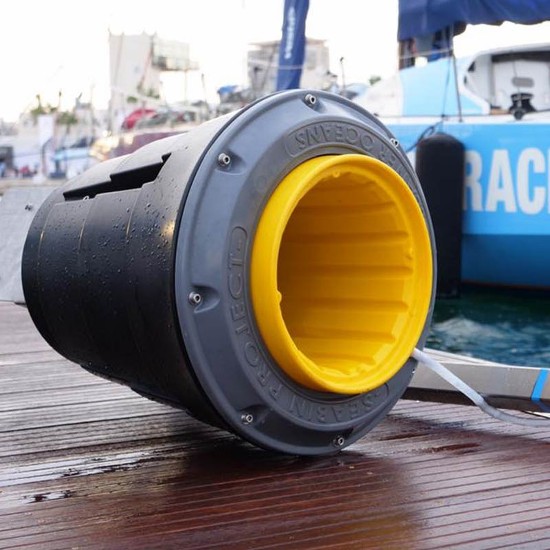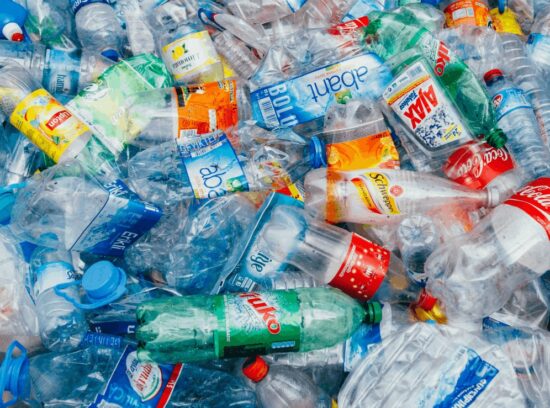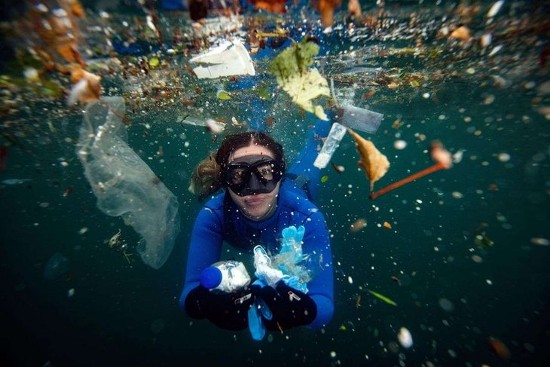In 2019 we manufactured 460 million tons of plastic. That brought the accumulated total on the planet to 9.54 billion tons. No doubt in 2022 that number has surpassed 11 billion tons.
What has made plastic attractive to us is the versatility of the material. We can turn it into bags, packaging, tubing, pipes, and furniture. We even build houses out of plastic. This would be fine if the things we created from plastic were used indefinitely. But the truth is, so much of what we manufacture is single-use plastic which ends up in landfills, or in rivers, lakes and oceans.
Plastic can persist in the environment for decades and even centuries. In a 2012 posting, I reported that plastic was in evidence throughout the entire water column in ocean water samples taken to depths of 33 meters (+100 feet). A Pacific Ocean study estimated 46,000 pieces of plastic per square kilometre. When you consider the Pacific Ocean is 155 million square kilometres, that means 7,130,000,000,000 pieces of plastic. Since 2012 that number has likely grown.
Plastic breaks down when exposed to sunlight. Plastic water bottles tossed overboard can take 500 years to disintegrate completely into their chemical building blocks. That’s longer than we have been manufacturing the stuff.
But before plastic degrades to molecules it becomes variable-sized particles and eventually microplastics that get ingested by wildlife and us. Today we increasingly eat plastic with potential health problems as a result. One example to note, vibrio cholera, is the bacteria that causes cholera and it has been found attached to microplastic particles in places like the North Sea. And if that doesn’t alarm you enough, a report by the Plastic Health Coalition notes that we ingest between 74,000 and 121,000 plastic particles every day.
So our love and use of plastic require us to find solutions to deal with the waste produced from its consumption. What are we doing about it?
Recently, I came across two projects that address plastic waste. The first is a waste capture robot being used in North America’s Great Lakes to capture plastic trash. The second is a new chemical oxidation process that can break down plastic into its chemical constituents that are then consumed by microbes to create new polymers.
Robot Trash Collector Roams Lake Ontario Gathering Plastic

A team at the University of Toronto has invented floating robot trash cans they call Seabins. They were created to deal with the 10 million kilograms (22 million pounds) of plastic litter that enters the Great Lakes every year. The first devices were launched in 2019 and have been pulling floating waste out of the lakes ever since. Dozens of them are being used in the cross-border project called the Great Lakes Plastic Cleanup.
Each Seabin operates a spinning vortex that draws in floating waste from up to 49 metres (160 feet) away. Each averages 28 grams of collected waste including up to 2,000 pieces of microplastic along with larger plastic particles and pieces daily. The University oversees 12 of the bins with many more distributed and operating from 45 marinas throughout the lakes. Each is collecting the equivalent amount of plastic found in 7,000 water bottles as they float in the lakes from May to November.
Melissa De Young of Pollution Probe, one of the financial supporters of the project recently was quoted in an article in The Verge, where she states, “We’re doing what we can to remove plastic from the water, but we know that the technologies alone are not going to solve the problem…The data that we’re collecting is really critical because it provides, first, an understanding of the extent of the problem.”
Two-Step Process Converts Plastic Waste

One of the biggest challenges about last is the variety of forms and types manufacturers create. The chemistry and molecular structures of these different plastics are all over the map and it drives plastic recycling programs crazy with differentiating number designations. Different programs only take a subset of the numbers that represent the different plastic types. That’s why, in the U.S., only 5% of plastic gets recycled with the rest ending up in landfill, rivers, lakes, and oceans.
Researchers at Oregon State University (OSU) are part of a collaborative effort involving the Massachusetts Institute of Technology, University of Wisconsin-Madison, Oak Ridge National Laboratory, and NREL at the U.S. Department of Energy. They have pioneered a method to break down plastic into its chemical building blocks using oxygen and a catalyst. They feed the result to an engineered microbe, Pseudomonas putida, which digests and spits out biopolymers used to produce advanced nylon fibres. The project goes by the acronym BOTTLE, which stands for Bio-Optimized Technologies to keep Thermoplastics out of Landfills and the Environment.
Lucas Ellis, an OSU postdoctoral fellow states, “Our work has resulted in a process that can convert mixed plastics to a single chemical product…In other words, it is a technology that recyclers could use without the task of sorting plastics by type.”
The test materials that the microbes are digesting include a mix of polystyrene (foam coffee cups), polyethylene terephthalate (found in carpets, clothing and single-use plastic bottles) and high-density polyethylene (milk jugs). The two-stage process produces polyhydroxyalkanoates and beta-ketoadipate suitable for manufacturing advanced nylon.
The next step in the research will add other plastics including polyvinyl chloride (PVC) and polypropylene. Kevin Sullivan at NREL notes, “The chemical catalysis process we have used is just a way of accelerating a process that occurs naturally, so instead of degrading over several hundred years, you can break down these plastics in hours or minutes.”









